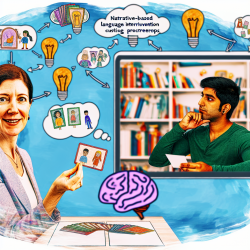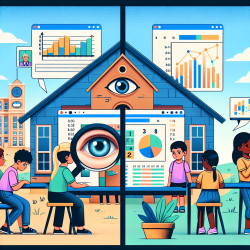Narrative-based language intervention has shown promising results for children with Developmental Language Disorder (DLD). The study titled "Cognitive and linguistic effects of narrative-based language intervention in children with Developmental Language Disorder" by Laura J. Pauls and Lisa MD Archibald explores how this approach can positively impact language skills, working memory, and even academic performance. Here’s how practitioners can apply these findings to improve their practice.
Understanding the Research
The study involved ten children aged 8-11 with DLD who underwent 15 sessions of narrative-based language intervention. The results revealed significant gains in language for five participants, improvements in working memory for several children, and carry-over effects to reading and math for some.
Implementing Narrative-Based Language Intervention
Narrative-based interventions focus on story structure (macrostructure) and specific language elements like syntax and vocabulary (microstructure). Here are some practical steps to integrate these interventions into your practice:
- Choose Appropriate Materials: Select engaging storybooks that align with the children’s interests and reading levels. Books like "Small Saul" and "Stanley's Party" can be excellent choices.
- Interactive Reading: Engage children in interactive reading sessions where they can predict story outcomes, discuss character motivations, and explore new vocabulary.
- Retelling and Elaborating: Encourage children to retell stories using visuals and prompts. This helps reinforce story structure and language elements.
- Scaffold Learning: Use techniques like focused stimulation and dialogic reading to support children in using complex syntax and varied vocabulary.
- Monitor Progress: Use probes to measure improvements in language and working memory. Tools like sentence combining tasks and nonword repetition can be effective.
Encouraging Further Research
While the study showed positive results, it also highlighted the variability in response to intervention. Further research is needed to understand which children benefit the most from narrative-based interventions. Practitioners are encouraged to document their observations and share findings with the broader educational and therapeutic community.
Conclusion
Narrative-based language intervention offers a promising approach to support children with DLD. By incorporating these strategies into your practice, you can help improve their language skills, working memory, and academic performance. To read the original research paper, please follow this link:
Cognitive and linguistic effects of narrative-based language intervention in children with Developmental Language Disorder.










